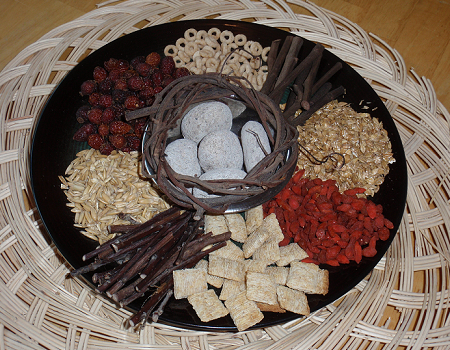For the month of October, one (1) chinchilla was surrendered and two (2) chinchillas were adopted. We still have a waiting list for surrenders and adoptions continue to be low. We have had quite a large number of people come to us for our matchmaking service which is both helpful and frustrating. It's helpful in the sense that adoptable chins are going home, but frustrating that only the most docile chins are eligible. We have lots and LOTS of single males who are friendly, but can't be caged with another chin who absolutely need good, permanent homes. *sigh*
Anywho...the topic of this month's post is:
Just Because You Can, Doesn't Mean You Should
For some strange reason, this month we've experienced quite a large number of shocking bits of information. All of it has come with the disclaimer that the chins "never had very much", "it was an emergency", "they do fine", "it was never for very long", or Whimsy's personal favorite, "I didn't know". Those are just some of this month's highlights. Welcome to our world.
We are always wary of people who claim they have researched chin care or who get advice from pet stores. The internet is full of chin-information, much of it simply reflects the beliefs of the writer who is seeking to justify their practices. Yes, this includes our website as well. However, we will never advocate anything that is contrary to what is closest to natural for ours and your pets. For example, even though we continuously stress the importance of a highfiber/lowprotein/nofat/nosugar diet, we still see chins who are fed dried fruits, nuts, and yogurt candy drops!
Here's another example, the picture of this pet store treat specifies that it's for chinchillas. The ingredients, however, state that this plastic-like, carrot shaped lump is made of rice, pineapple, starch, palm oil, gelatin and artificial colors. Just...no.
Pet stores advocate a plethora of dangerous items, including food, treats, plastic exercise balls, hanging wire hay balls, etc. Your job is to weed through the bling and choose the best. (Which is another reason why our web store began. We do our very best to offer affordable, healthy items! Don't even get me started on those who offer flavored and colored loofahs!)
Another big pet peeve are people who say their single chins do just fine alone. *nods* Yup, even we have chins kept in single cages...for their safety. Chins are herd animals and being alone is unnatural. However, if they are highly aggressive towards their own kind, there is no escape for the underdog in an attack, in a cage. We will always advocate for pairbonding same sex chins if they are receptive to it.
Moderation is key, but if we want to keep our fur babies healthy and safe, we will have to be wise about their care. As their guardians, we should ask ourselves whether a certain food or care practice is acceptable, or beneficial. *hint* Our goal is to encourage people to choose beneficial over acceptable.













